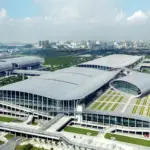Before the inauguration of the Olympics, some figures on the flow of supplies began to be published in the media and even by the big global transportation companies, such as CMA/CGM and its subsidiary Ceva:
- Delivering, assembling and dismantling 17,000 beds for the athletes and their teams in the Olympic Village;
- Delivering around 1,300,000 items of furniture, equipment and merchandising panels;
- Moving and assembling around 900,000 sports devices, including trampolines, surfboards, boats, etc.
- Stock, transport and assemble around 600 advanced mobility vehicles and 2,345 electric vehicles for circulation;
- Handle around 170,000 pallets;
- Transporting around 250 containers with chairs and benches;
- Carrying out around 7,000 “last mile” trips to deliver the equipment needed for competitions, with a fleet of more than 300 vehicles, including vans and trucks.
Even Brazil’s Azul Cargo is already counting its macro numbers of 9,000 tons of uniforms and accessories for the Brazilian delegation, including medical and physiotherapy equipment as well as plush mascots.
All this is taking place this year, after the last Olympics under the effects of the pandemic and in an era of extraordinary digitalization.
These are figures that would make any logistics operator envious, and everything is being done to avoid any failure that could be fatal to an Olympic athlete!






